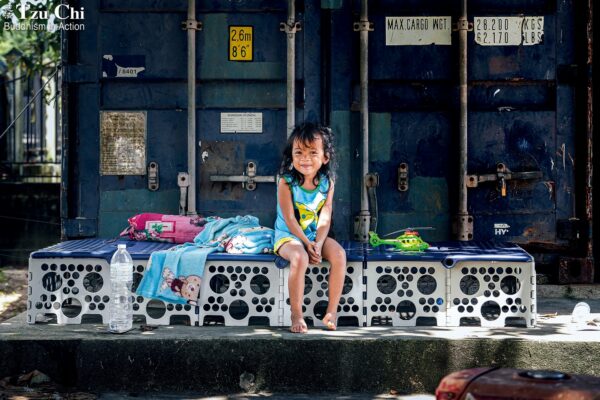By Li Qiu-yue, Tzu Chi Teachers Association
Edited and translated by Wu Hsiao-ting
Graphic by Zhong Ting-jia
This article delves into the reasons behind bullying and offers solutions to combat this prevalent issue.

A teacher asked, “Bullying has become a prevalent problem in schools, with students even provoking me. How should I deal with this?”
In recent years in Taiwan, there has been a significant rise in reported cases of bullying in schools, from 562 cases in 2018 to 1,942 cases in 2022—a three-and-a-half-fold increase in just four years. How can we tackle this issue?
Non-harming and non-victimizing
Bullying fundamentally stems from issues in interpersonal interactions. Factors such as declining birth rates, challenges in social adaptation, weakened family functions, and excessive immersion in the virtual world, among others, contribute to this issue.
Research has revealed that most bullies struggle with low self-esteem, leading to a distorted sense of unfulfillment. This motivates them to engage in bullying behavior, often targeting vulnerable individuals, to boost their own self-worth. Some may join the ranks of bullies out of a fear of social isolation, while others passively observe bullying without intervening. On the other side, bullied children often exhibit traits such as timidity and social isolation.
I am a former schoolteacher. I often told my students, “Everyone is equal. You don’t have to compromise your true self to please others, and it’s not right to mistreat those you dislike. What’s more, let’s assess people based on their actions, not personal preferences.” I’d also tell them that if they couldn’t find someone in their class to befriend or speak up for them, it was an opportunity for self-reflection on how to cultivate better interpersonal relationships and avoid becoming a target for bullying.
Supporting vulnerable children
Equipping vulnerable children with self-defense skills is a sustainable solution. Alternatively, entrusting them to a more compassionate and cohesive group can also yield positive results.
One of my students, C, had suffered from a speech impediment since childhood. As a result, he was introverted and lacked confidence. His mother revealed that he had no friends and had experienced bullying in junior high, which instilled in him a deep fear of going to school.
All the students in C’s class were friendly and got along well. However, after the first week of school, I noticed that C was being consistently left out during group activities. Delving deeper into the issue, I discovered the underlying reasons. His peers perceived him as moving too slowly and having communication difficulties, which led to concerns about how this could affect the group’s overall performance, hence the exclusion.
I had a private conversation with the class leader and a few enthusiastic students, encouraging them to proactively invite C to join their group during activities. I promised to reward this group at the end of the semester if they could provide C with proper support. Additionally, I spoke with C, letting him know that the class leader would always include him in their group and encouraging him to participate wholeheartedly. Over the course of a semester, C began to smile more, gained confidence in his speech, and developed better relationships.
Building trust
School authorities have the power to administer justice by delivering rewards and punishments. The Student Affairs Office can impose disciplinary actions, and the Counseling Center can facilitate mediations. Bullying becomes an extremely challenging issue should educators turn a blind eye or adopt an ostrich mentality. Ignoring it will only worsen the problem in the long run.
Therefore, incidents of bullying must be addressed immediately. The homeroom teacher can listen to the bully’s perspective, acknowledge their viewpoint, and then express their concerns. They should work toward achieving a consensus to prevent future misconduct. Extending goodwill can reduce the bully’s defensiveness. In more severe cases, parents, law enforcement, and the judicial system must intervene. This is to make the bullies understand that this is a society governed by the rule of law.
Teachers must establish rapport with students. Building trust in normal times and promptly addressing issues when they arise will make bullies or the bullied feel the teacher’s care, concern, and love, thus effectively curbing bullying.
Many bullies have themselves been victims of bullying in the past. They replicate this pattern of mistreatment to find a sense of security. Similarly, academically gifted students might look down on those with lower grades because their parents treat them differently based on academic performance, instilling similar values in them. Other children may have endured domestic violence at home; their experiences have taught them that using force is the only way to protect themselves. To avoid becoming targets of bullying, they often choose weaker individuals as their victims.
Children raised in nurturing families tend to have better psychological well-being, healthier mindsets, and engage in positive activities. Consequently, they are less likely to become bullies or victims of bullying. Hence, emphasizing the significance of family education and recognizing its crucial role is essential in reducing the occurrence of bullying.



